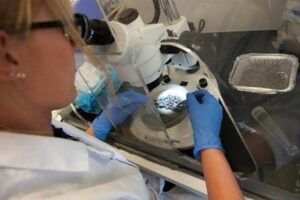WOBO thanks SHP for the update in respect of the analyst’s guide to asbestos.

The HSG248 Asbestos Analyst’s Guide was originally published in 2005, and this revision takes into account the Analyst Inspection Programme carried out by the HSE in 2015. A report was subsequently produced, with this review underpinning many of the revised changes and seeking to address the issues that were identified.
Having been involved in the consultation for the changes to this guidance note, SOCOTEC has made adjustments to its operating procedures and client services in line with many of the amendments. Here, it outlines some of the key changes:
- More detail on scoping/contract arrangements.
Many problems have arisen in the past due to inadequate scoping and contractual arrangements, which has then put time and resource allocation pressures on the analyst organisation. The HSE has proposed that the analyst will be more involved with the scoping of the work (including preparation of risk assessments and plans of work) to ensure adequate planning, agreement on four-stage clearance (4SC) requirements and allocation of resources.
This will be achieved by having a pre-start site visit and meeting between all parties to discuss each element of the proposed work, including the Licensed Contractor’s (LC) plan of work. Under the Construction (Design and Management) Regulations (CDM), it should be noted that the LC has legal duties to cooperate with the analyst and provide them with adequate information in a timely manner.
- Need for better standard of cleaning by Licensed Contractors
It is the duty of the supervisor for the LC to carry out the initial visual inspection of the enclosure or work area upon completion of the abatement works. Only when the supervisor deems the area to be clean should the analyst enter the enclosure, as this reduces the level of risk posed.
It is very important that the analyst does not undertake any cleaning activities themselves, as this could be seen as a breach of the Health and Safety at Work Act. The HSE has introduced a form that the LC supervisor must complete and hand over to the analyst, confirming that they have carried out a thorough visual inspection of the work area and that it is satisfactory for the analyst to enter and carry out their own visual examination.
